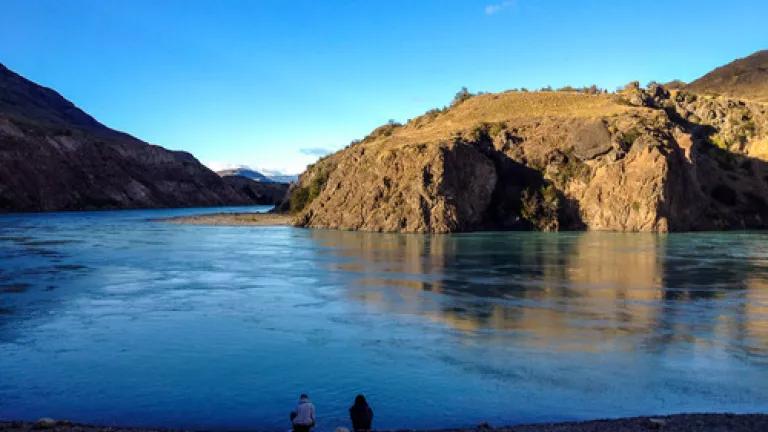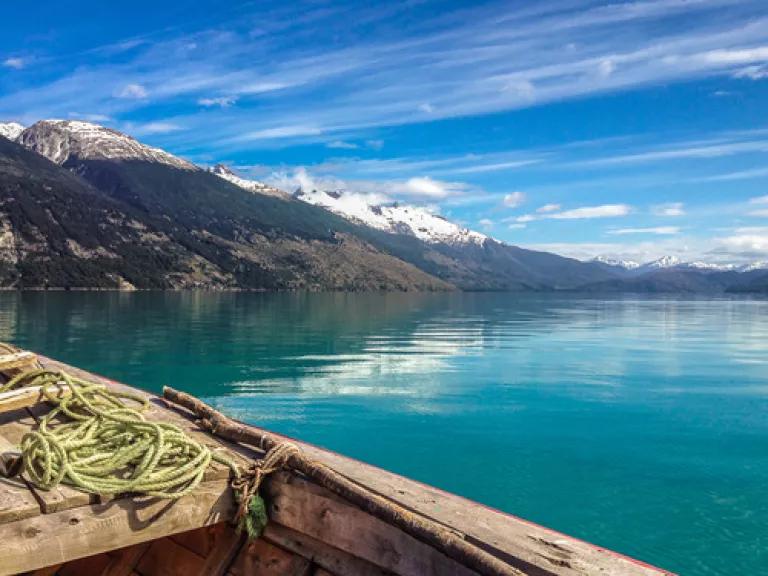
The Baker River in Patagonia, ice-blue and gentle as a summer breeze in some parts, raging white in others, is about as stunning and wild a place as you could ever hope to see on this earth. These glacial waters might be the cleanest, purest – and coldest -- I’ve ever taken a swim in. The last time I was there, having a picnic on its shore, the almost incomprehensible confluence of the river’s power and tranquility left me speechless.
Baker River, c. Nadine Lehner
Yet for the past eight years, energy companies have been proposing to build a series of massive dams, hundreds of feet high and costing billions of dollars, on both the pristine Baker and the equally wild Pascua River. These mega-dams, and the nearly 1,200-mile-long transmission line that would have been needed to get electricity from the dams to Chile’s cities, would have forever altered the landscape of wild Patagonia.
Thanks to a landmark decision earlier this week by the Chilean government, led by President Michelle Bachelet, these incomparable rivers will remain true to their course. On Tuesday, the government rejected the destructive HidroAysen dam project, helping open the door for a new, clean energy future for the country and its people.
Bachelet’s decision to oppose the massive hydropower project was a courageous but sensible move. For years, public opposition to the dam had been mounting, both within Chile and around the world. NRDC’s own BioGems Defenders sent almost 150,000 messages to Chilean authorities urging them to protect Patagonia’s incomparable landscapes.
Also, it was becoming increasingly clear that Chile did not have to rely solely on large dams or coal for energy. With its abundant solar, wind, geothermal and tidal resources, and untapped energy efficiency potential, Chile could meet its energy needs without destroying invaluable wilderness. Efficiency and clean, renewable energy were not resources for some far-off future, but actually the cost-effective energy sources of today.

Solar panels in the desert (Rodrigo Arancibia Zamora, via Flickr)
Renewable energy projects already in the pipeline in Chile, including the Cerro Dominador solar thermal plant in the Atacama Desert, which will be South America’s largest solar thermal plant, have the potential to produce as much energy as six projects the size of HidroAysen. And energy efficiency programs in Chile, according to a 2010 study, can save as much energy in 10 years as the output of 13 HidroAysen projects. These are the types of resources that can support Chile as it seeks to meet its growing energy needs.
Back in 2007, NRDC joined forces with local citizen and community groups to protect wild Patagonia and explore the potential of clean, renewable energy for Chile. Working with local and international experts, NRDC helped publish technical and economic studies demonstrating that non-conventional renewable energy sources in Chile are not only increasingly competitive with conventional sources, but also bring more benefits to Chileans than “business as usual.” This message is resonating in Chile: last fall, the government passed a law calling for 20 percent of the country’s electricity to come from renewable sources by 2025.
The rejection of HidroAysen is a major victory for Chile and its people, and an important step toward making Chile a leader in clean energy in Latin America and even globally. NRDC’s work continues in Chile to ensure the protection of Patagonia, and to help the government secure a sustainable, clean energy supply for its people.

c. Nadine Lehner